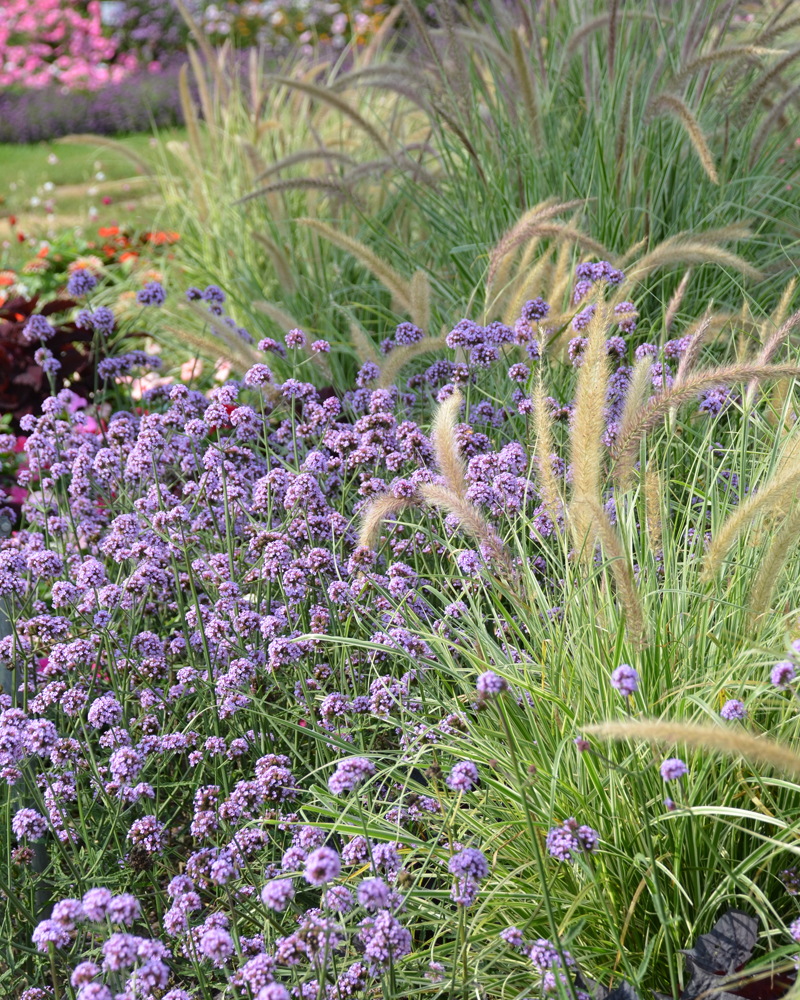Welcome to the vibrant world of decorative grasses with purple flowers! In this comprehensive guide, I will share my personal experiences and expert knowledge on this stunning combination. As someone who has spent years experimenting with various plants in my garden, I can confidently say that these beautiful elements can elevate any landscape. Let’s dive into the details!
Introduction to Decorative Grass with Purple Flowers
Decorative grasses are popular for their texture, movement, and color. When paired with purple flowers, they create striking visual contrasts and harmony in your garden. This article will cover various types of decorative grasses with purple flowers, their benefits, care tips, and much more!
Benefits of Incorporating Decorative Grass with Purple Flowers
- Aesthetic Appeal: The combination of soft grasses and vibrant purple blooms creates a unique visual interest.
- Low Maintenance: Most decorative grasses are drought-resistant and require little upkeep.
- Wildlife Friendly: These plants attract beneficial insects and pollinators.
- Versatile Use: They can be incorporated into various garden styles, from modern to cottage gardens.
Types of Decorative Grasses with Purple Flowers
Let’s explore some of the most beautiful varieties of decorative grasses that feature purple flowers.
1. Purple Fountain Grass (Pennisetum setaceum)
This stunning grass is known for its feathery, maroon-purple flower spikes. It can grow up to 3 feet tall and thrives in sunny spots.

| Feature | Details |
|---|---|
| Height | 3-5 feet |
| Sunlight | Full sun to partial shade |
| Soil Type | Well-drained, sandy or loamy soil |
2. Blue Oat Grass (Helictotrichon sempervirens)
While primarily known for its blue-green foliage, Blue Oat Grass can be accompanied by spikes of purple flowers that add charm.

3. Miscanthus (‘Morning Light’)
This ornamental grass features delicate cream and pink flower plumes that can appear with a hint of purple in certain lights.
Care Tips for Decorative Grasses
- Watering: Ensure your grasses receive adequate water, especially during dry spells, but avoid waterlogging.
- Fertilization: Apply a balanced fertilizer in spring for optimal growth.
- Pruning: Cut back dead foliage in early spring to promote new growth.

Creating a Beautiful Landscape with Decorative Grasses
Integrating decorative grasses with purple flowers into your garden design can enhance its overall aesthetic. Here are some practical tips:
1. Choose the Right Location
Plant your grasses in a spot where they can thrive, ensuring they receive the appropriate amount of sunlight based on their needs. This can drastically affect their growth and flowering.

2. Combine with Companion Plants
Consider complementing your decorative grasses with other perennials, shrubs, or annuals. Here are some excellent companion plants:
- Lavender: Its purple flowers pair beautifully with grasses.
- Sedums: These succulent plants add texture and contrast.
- Black-eyed Susans: Their bright yellow flowers provide a stunning contrast against purple blooms.
3. Create Visual Interest
Layering your plants can create depth, and varying heights can add drama to your landscape. You might position taller grasses behind shorter flowering plants.

Design Inspiration: Real-Life Examples
In my garden, I’ve created a serene corner with Purple Fountain Grass flanked by lavender and some low-growing sedums. The result is not only visually appealing but has also attracted hummingbirds and butterflies, creating a vibrant ecosystem!
Common Questions Regarding Decorative Grass with Purple Flowers

FAQs
What are the best decorative grasses to plant alongside purple flowers?
Some great options include Blue Oat Grass, Feather Reed Grass, and even ornamental sedges that can provide textural contrast to purple flowers.

How often should I water decorative grasses?
Generally, decorative grasses need watering once a week during dry periods. However, it’s essential to check the soil moisture before watering.
Do decorative grasses require special soil?
Most decorative grasses prefer well-drained soil. Amend your soil with organic matter to improve drainage and nutrient availability.
Pros and Cons of Decorative Grasses with Purple Flowers
Every plant has its advantages and disadvantages. Here’s a quick overview:
Pros
- Attractive aesthetics
- Drought-resistant
- Low maintenance
- Wildlife friendly
Cons
- Can become invasive if not controlled
- Some varieties may require division every few years
- Not all are hardy in colder climates
Conclusion: Embrace the Beauty of Decorative Grasses with Purple Flowers
Incorporating decorative grasses with purple flowers into your garden can transform your landscape into a stunning visual masterpiece. With the right care and design choices, you can create a vibrant and inviting space that not only showcases beautiful plants but also supports local wildlife.
As you embark on this gardening journey, remember that experimentation is key. Don’t hesitate to try out different combinations and see what works best for your unique space. Happy gardening!